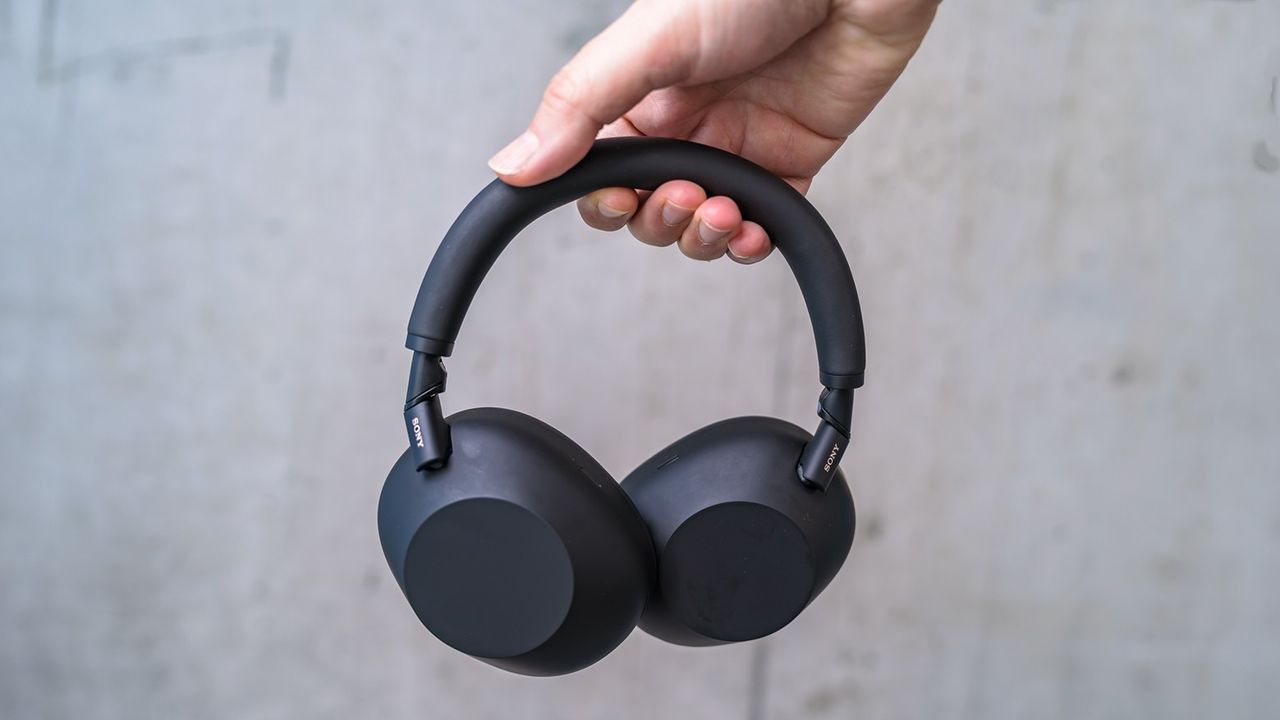
One of the smartest things Sony does with its flagship headphones is wait every two or three years to release a new version. Let the quality speak for itself for a while, and then follow it up with something that’s truly better the next time around. Other brands that follow annual product cycles might want to consider the same approach.
I say that because the Sony WH-1000XM6 come with lofty expectations based on the world-class active noise cancelation (ANC) and sound quality the line is known for. Meeting them is what puts these over-ear cans in an elite category worth listening to anywhere you go.
Sony WH-1000XM6: Price and availability
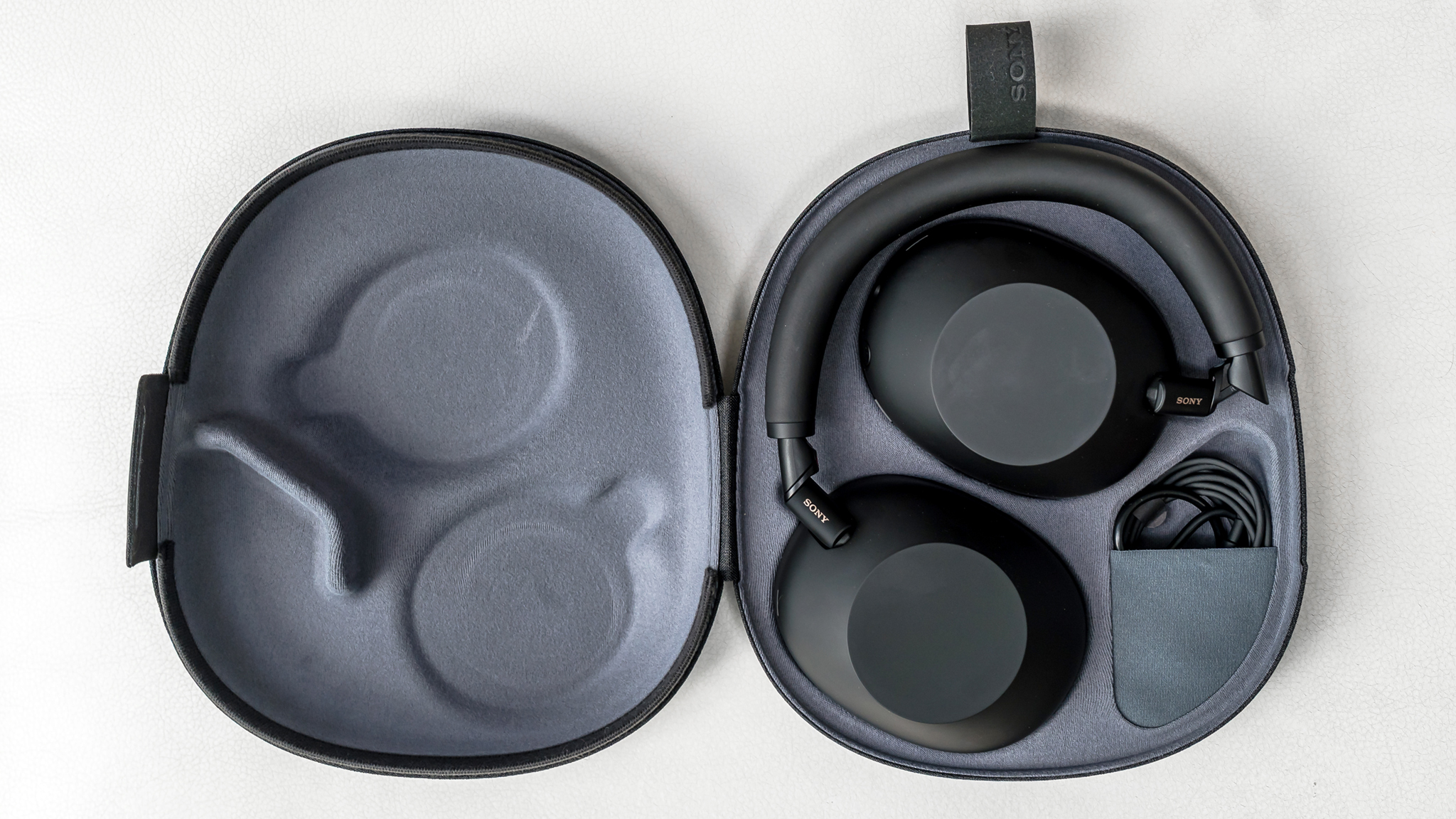
Sony launched the WH-1000XM6 in May 2025, and you can find them available at a number of different retail stores and online vendors. They’re pricey at $429, but you may come across a discount over time depending on the retailer. They come in black, silver, and midnight blue.
Sony WH-1000XM6: What's good
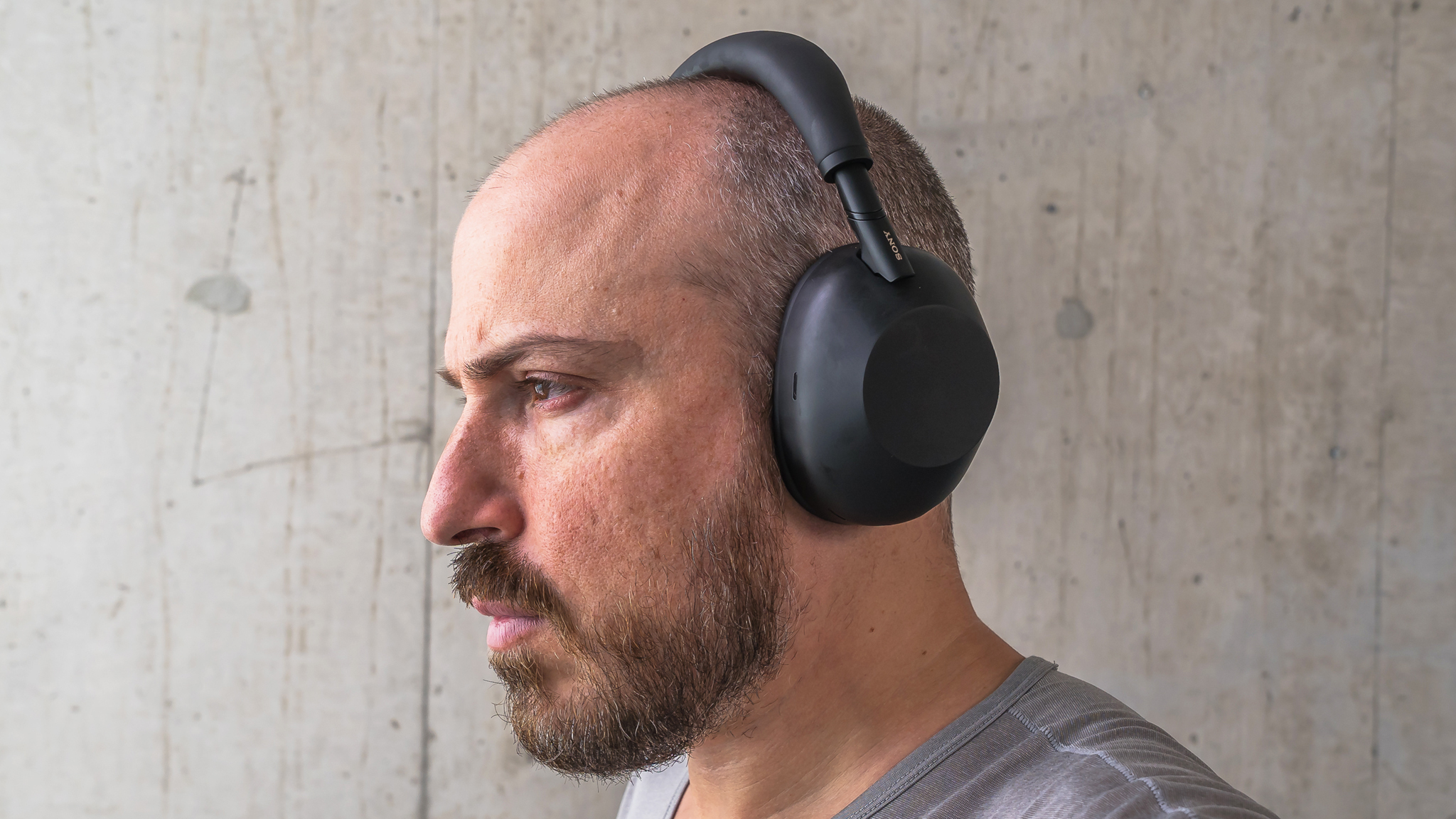
With each successive generation, this lineup sees nips and tucks to the design aimed at increasing comfort and passive isolation. The WH-1000XM6 fold flat and inward to reduce their footprint and make them easier to travel with. The hinge is also more durable this time, and the headband gets a wider profile that helps reduce any feeling of clamping on your head.
The rest of the design largely follows previous models, including a matte finish and similarly-sized ear cups and replaceable pads with familiar memory foam.
A brief note about the case. It’s similar to previous ones, except for how the XM6’s fold to lessen the overall footprint. The latch closing them shut feels like an easier method than the all-around zipper, too.

Internally, Sony jumps from eight microphones in the WH-1000XM5 to 12 mics in the XM6, spreading them out by laying out eight on the outside of the ear cups and four inside the cups to help capture all the ambient noise and reduce it to mere silence. That’s where the new QN3 processor comes in — the noise-canceling brain that does the legwork behind the scenes.
On a recent flight, I could barely notice the droning sound of the plane’s engine or hear the person sitting next to me. And rather than pause playback or remove the headphones, I would just put my hand over the right cup to automatically lower the volume and briefly disable ANC to hear an announcement or exchange a few words with someone.
If I choose to take them off, the wear sensors are as good as ever, immediately pausing playback and resuming instantly once back in place.

The one remaining challenge is high-frequency sounds, like sirens, screaming kids, and screeching train tracks. The XM6s do a great job muffling them down to more insignificant levels, though it also depends on how loud your audio volume is. If those sounds remain continuous or repetitive, you’ll find yourself raising the volume to dampen them further, which could be a problem if you go too loud for longer stretches.
Sony’s Sound Connect app is rife with a variety of cool settings, though I wish it would clean up the interface to lay it all out in a more constructive way. As is, it feels aged, crowded, and lacking intuition, but you’ll need to navigate through it to find important pieces to utilize.
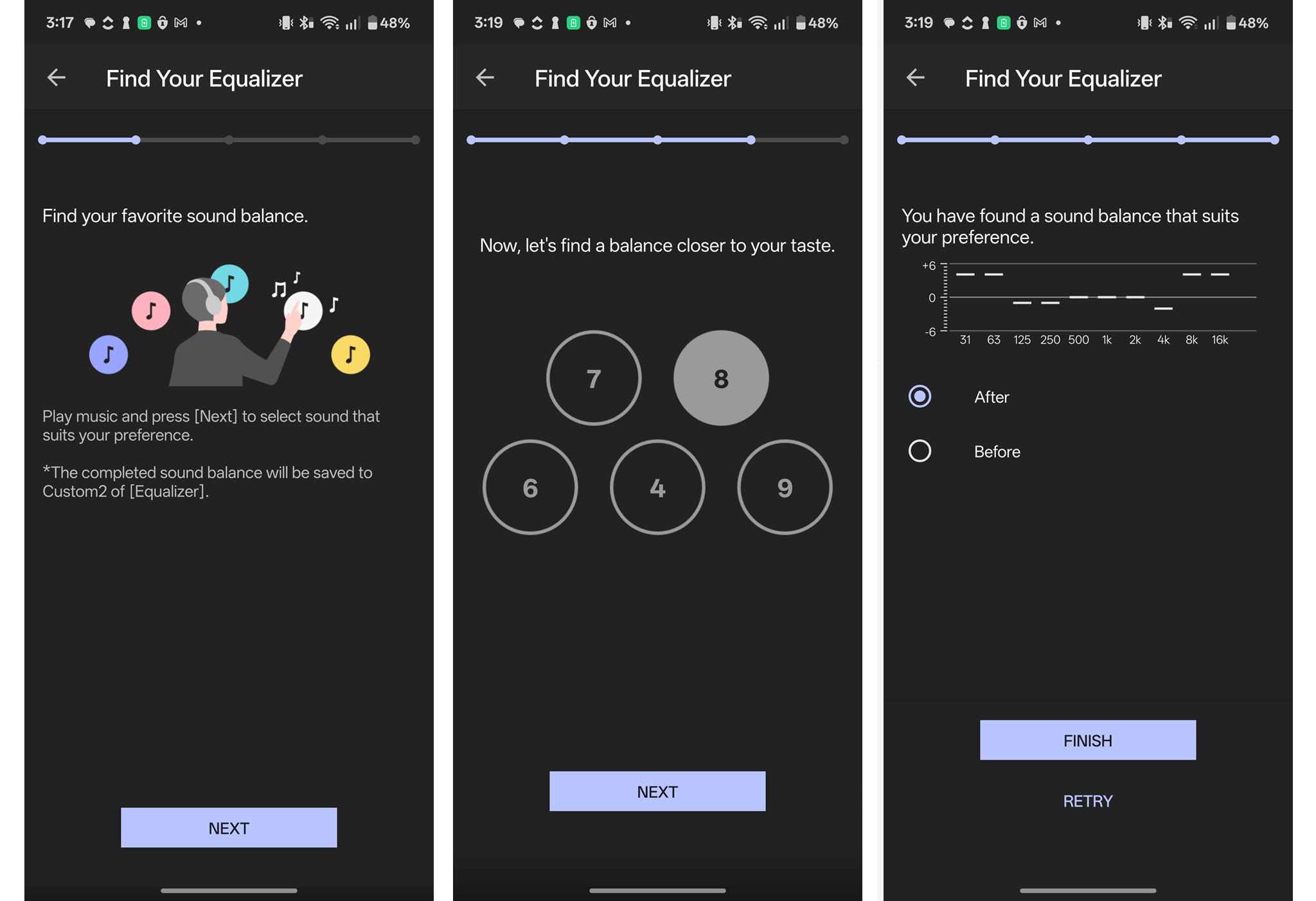
One of the most influential and subjective features is Find Your Equalizer, which creates a custom EQ setting based on a series of sound preference tests. This differs from other brands that use onboard mics to measure the shape of your ears and hearing ability in that it leans more toward a sound signature than personal tuning. I recommend going through this process — or at the very least, tinkering with the EQ to see what suits your own taste for tuning.
It's not that the XM6 don’t sound good out of the box. It’s just that, like a lot of over-ears these days, the flatter EQ may not fully realize its potential. More dynamic bass, mids, or treble would require you to find that balance on your own. It’s certainly there, given Sony’s excellent foundational tuning, so the odds of you coming away with amazing sound quality are quite high.
A big reason is that the 30mm drivers are so clean. Sony changed the architecture inside without overtly affecting how the sound travels to your ears, helping retain the clear and resonant quality established throughout the 1000XM line.
One of the most influential and subjective features is Find Your Equalizer, which creates a custom EQ setting based on a series of sound preference tests.
That also explains why all audio passing through the drivers feels consistent, whether it’s 360 Reality spatial audio or hi-res tracks using the LDAC codec. It’s too bad (though hardly surprising) that there’s no aptX HD support to broaden hi-res options, but since LDAC is a Sony codec, the exclusivity is on brand. This still gives Android users a leg up in hi-res support compared to iOS users, who can’t access the same quality.
The clarity extends to phone and video calls, which improve in two distinct ways. Extra mics mean you should come in clearer for those on the other end, while better sound makes them feel clearer to you. Sony pulls this off by way of an AI model that identifies voices and separates them from the surrounding ambient noise. It works in the background, proving to be an integral reason why busy streets and even gusty winds won’t succeed in ruining the conversation.
For anyone on the go or working in an office, it’s the kind of reliability you want when communication is key.
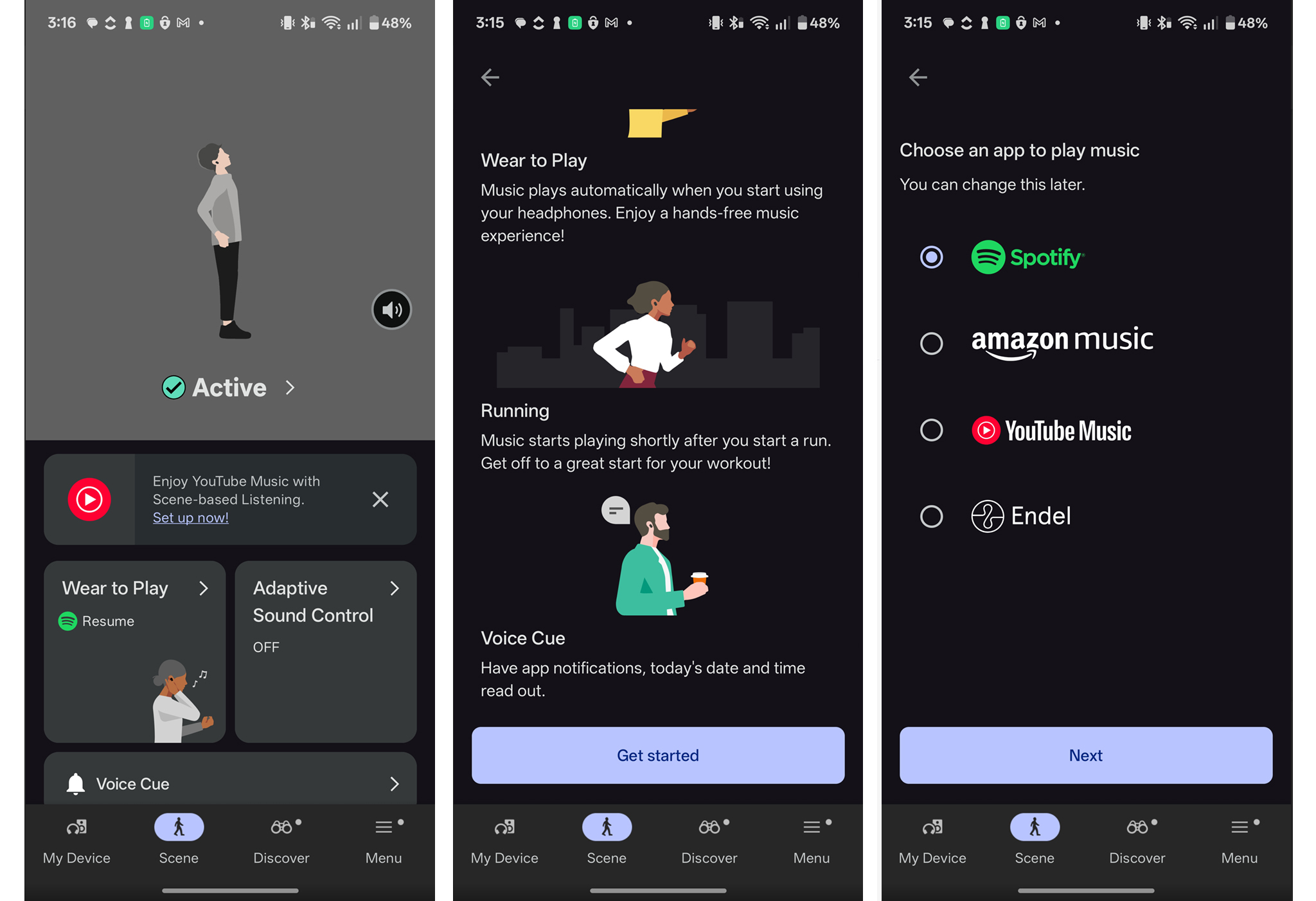
You can take all that further through the Scenes feature on the app, an expansion of Auto-play as it was previously known. Within it is Adaptive Sound Control to automatically adjust noise cancellation and ambient sound settings based on your location, and whether you’re walking, running, sitting, commuting, or working out.
The Auto-play portion starts playback from your preferred service (Spotify, Amazon Music, YouTube Music, or Endel) once you put the headphones on. Voice Cue reads out incoming notifications, including messages, which is convenient when you don’t want to pull your phone out. This way, you could verbalize a response through Gemini while keeping your hands free. It takes a while to figure out how all these things work, but they are worth trying given their uniqueness.
The onboard controls are a mix of two physical buttons and touch panels on the right ear cup. Both buttons are distinct to ensure you don’t press the wrong one. Press the ANC button to toggle between it and ambient sound, or hold it down to mute during phone calls. You can also set it so that a double or triple-press launches one of the supported music services. Press the power button once, and you’ll hear battery life levels.
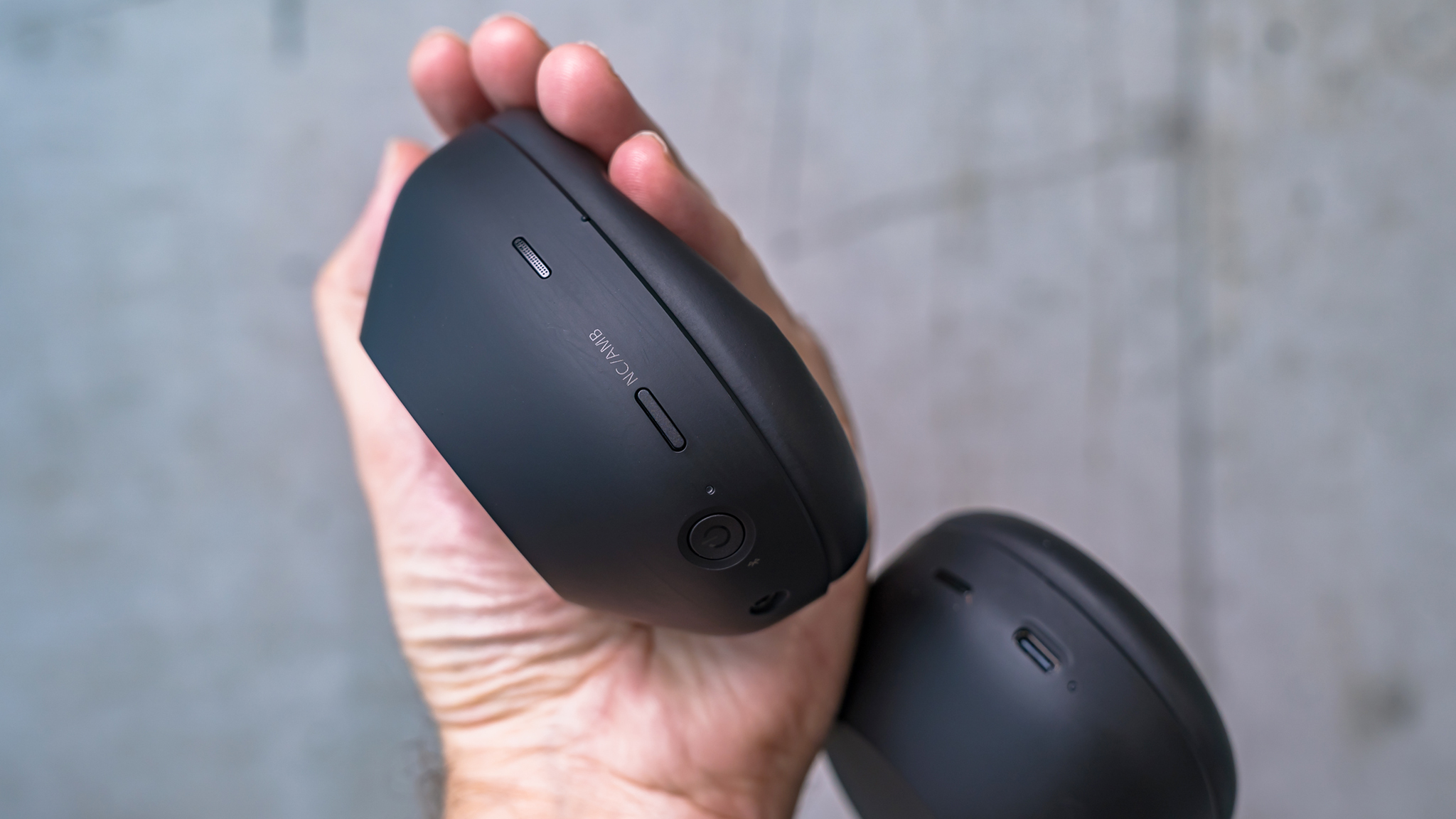
The rest of the touch-enabled controls on the right ear cup let you play/pause with a double-tap on either side. Simply swipe up or down to raise or lower the volume, or forward to skip a track and back to repeat one. You can also swipe forward or back and hold your finger to fast-forward or rewind, or press and hold on the earcup to activate Gemini or whichever voice assistant you use.
It’s common for touch controls to act finicky, yet these seem almost incapable of doing anything wrong. While you can turn them off entirely, you can’t adjust their sensitivity in case you feel they’re too effective. Nor can you change or reassign them.
Fortunately, despite all the extras going on here, battery life holds steady, largely managing up to 30 hours with ANC on. You can feel assured they’ll last for a long-haul flight or daily commute, but it’s worth noting that some competitors offer significantly more battery life per charge.
One thing I do like is that Sony retains the ability to charge and use the headphones at the same time, meaning you could charge them through your laptop while simultaneously listening to music or making a call. In a pinch, Sony claims you can get up to three hours of playback on a quick three-minute charge, which I can confirm is about right.
Sony WH-1000XM6: What I don't like
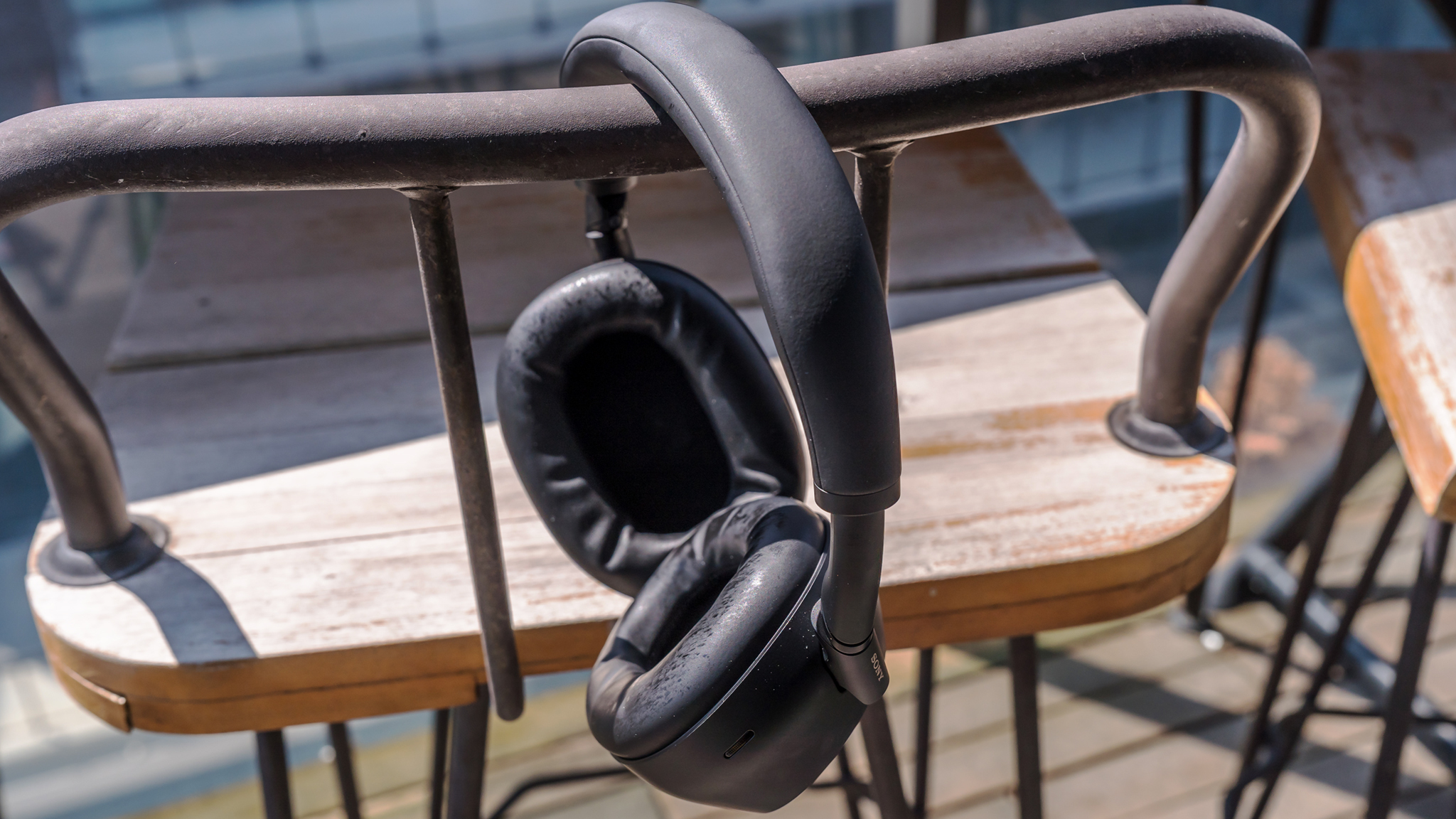
Finding fault in these headphones kind of feels like nitpicking, but no product is ever truly perfect, and even the WH-1000XM6 headphones will show a crack or two. I don’t have enough hair on the top of my head for additional padding, so the headband tends to be the one thing I adjust more often because of the thinner foam layer Sony goes with here. Your experience may vary.
A major disappointment is the lack of USB-C wired playback. I noted earlier that you could charge and listen at the same time, but that doesn’t mean the audio runs through the USB port. You would have to connect via Bluetooth or use the 3.5mm cable instead. That’s a real bummer for anyone wanting to do so on a phone or tablet without a headphone jack, forcing you to use a 3.5mm-to-USB-C adapter as a workaround.
If you’re thinking of these as workout headphones, keep in mind there is no IP rating for them. How well they can handle sweat is hard to gauge, and without the protection, you’ve got nothing to mitigate damage in the one-year warranty, so a cautious approach is wise to protect your investment.
Lastly, while I already touched on this, the app needs some sort of streamlined overhaul. The number of features is too numerous to cover them all in detail, but I can understand how some might view them as confusing while navigating through Sound Connect.
Sony WH-1000XM6: Competition

Sony’s flagship over-ears regularly earn their stripes among the best headphones in the industry, and that’s not going to change here. Tough competitors are out there anyway, including the Bose QuietComfort Ultra and their outstanding noise-canceling features, though Sony handily wins on call quality. More recently, the JBL Tour One M3 stand out as surprisingly effective alternatives, except you have to work harder to get the best sound out of them through the companion app.
The Bowers and Wilkins Px7 S3 won’t match Sony’s noise-canceling prowess, yet the audio quality is fantastic. If you find the design boring and want something that stands out, the Nothing Headphone 1 will definitely do that for you.
Sony WH-1000XM6: Should you buy them?
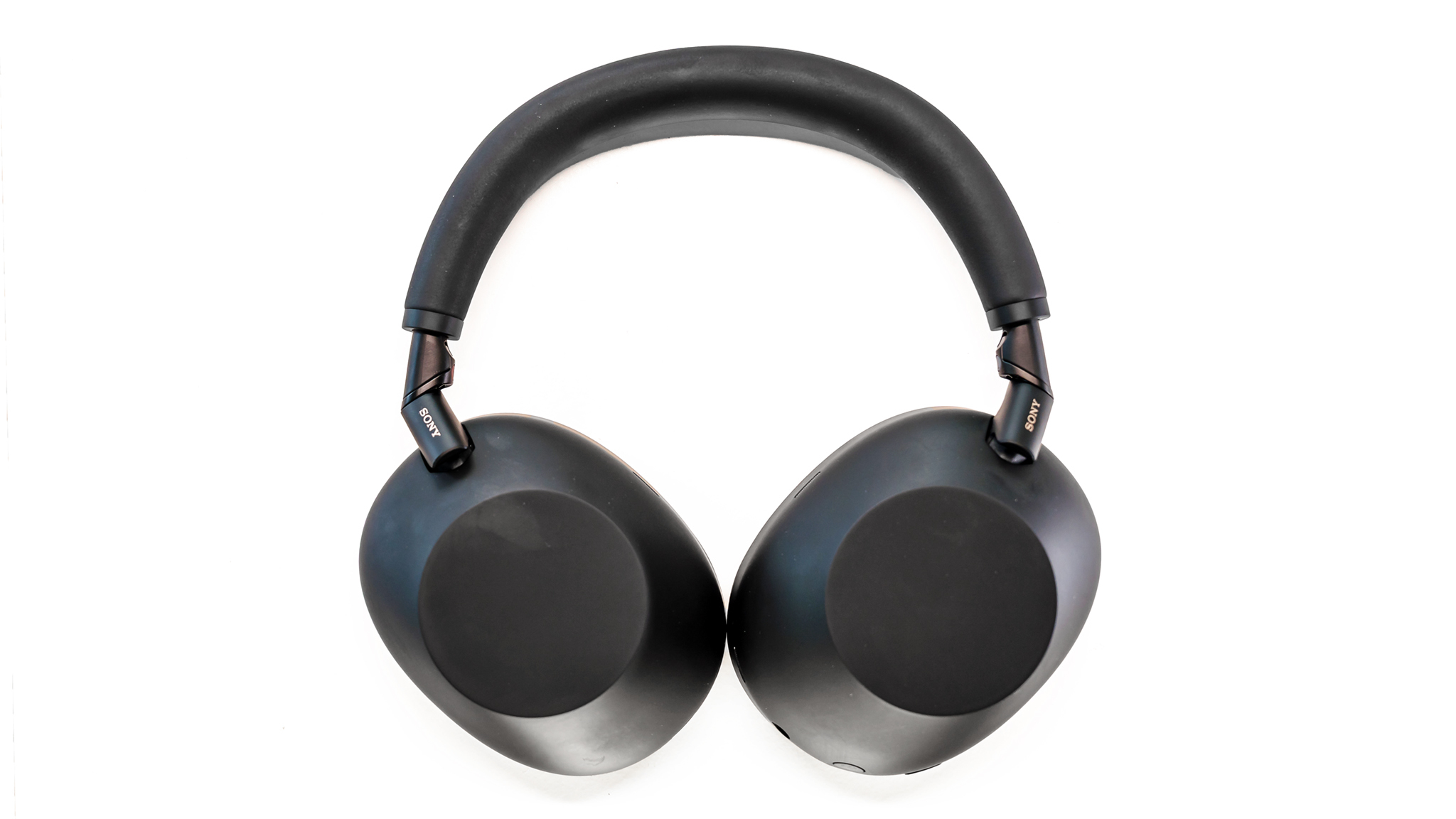
You should buy these if...
- You want excellent ANC.
- You want balanced sound.
- You like personalized features.
- You want reliable battery life.
You shouldn't buy these if...
- You want wired USB-C playback.
- You prefer to pay less.
I don’t know if Sony will wait as long as three years to launch a successor pair to the WH-1000XM6, but it will be interesting to see how they hold up if that is the case. Headphones are evolving a little faster now because sound quality, noise cancellation, and connectivity are more complementary than ever before. If I were to hazard a guess myself, I’d say these headphones will still be an elite pair, especially as they improve with firmware updates.
Apart from the convoluted app layout in plucking out the supporting features, these are among the best headphones you can find. And while they are expensive, they’ll likely last for quite some time if you treat them well.
Still the best
The Sony WH-1000XM6 follow up on the best wireless headphones with excellent sound, ANC, and a sleek and smart design.







